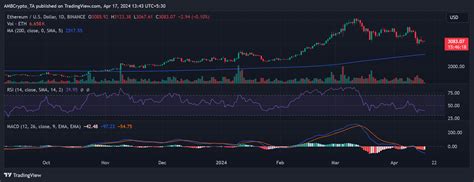- CRYPTOCURRENCY
-
by admin
The end of mining on Ethereum: what happens after
After extracting 21 million Bitcoin blocks, the traditional test algorithm that feeds Ethereum’s blockchain is no longer necessary. In fact, it is a crucial aspect of the platform architecture which was a milestone of its decentralized and safe network.
As mentioned, once all the blocks are extracted, the calculation of the Nonce (a unique number used to validate transactions) would actually become increasingly high in power. This is because the level of difficulty on Ethereum blockchain decreases over time when more miners join the network and increase their computational resources.
However, what happens after is where things become interesting. The transition from mining to validation blocks requires a significant change in the way Ethereum verifies transactions. In this article, we will explore what happens to the validation of transactions once all the blocks are extracted on the Ethereum network.
The transition to validation: what is the next?
When 21 million blocks are extracted and new blockchains blocks cannot be added (because sufficient computational resources are not available), the Ethereum network inserts a period of “hard forks” – in which the changes to the underlying code must be verified a majority consent.
At this stage, the validators on the Ethereum network will compete to add new blockchain blocks and validate transactions. The winner can propose a block and include it in the main chain. This process is known as “Proof-of-stake (POS)” validation.
PROOF-OF-Stake: a more efficient validation mechanism
The transition of Ethereum from mining to validation marks a significant movement from the traditional work test (POW). POW requires powerful computers to solve complex mathematical puzzles complex, using computational resources with high energy intensity. This makes it an expensive and high intensity process.
On the contrary, the POS mechanism uses a different approach: validators compete for the right to add new blocks by “beating” their token Ethereum (ETH) as a guarantee. The more ETH is aimed, the greater the chances of being selected as a validator.
This new validation mechanism offers several advantages:
* Energy efficiency

: With POS, energy consumption is significantly reduced compared to traditional mining.
* Cost savings : Validators only have to maintain a small amount of ETH, rather than using huge computational resources.
* Increase in safety : the randomness and unpredictability introduced by POS make more difficult for attackers to manipulate the blockchain.
The advantages of stake test
While it may seem an improvement in terms of energy efficiency and cost savings, there are also some theoretical advantages from POS:
* Processing of more efficient transactions : with less computational resources requests, transactions can be processed faster.
* Reduced latency : The validation process is more efficient due to the reduced need for complex mathematical puzzles.
Conclusion
The transition from mining to validation on Ethereum marks a significant change in the platform architecture. Even if at the beginning it may seem contraintive, this change has numerous benefits, including energy efficiency and cost savings. POS offers a more efficient way to validate transactions, reducing computational resources required by increasing the speed of safety and processing.
As Eth’s number of owners increases and the network grows, it will be interesting to see how validators adapt to this new validation mechanism and if POS’s benefits exceed its disadvantages in terms of scalability and transaction capacity.
